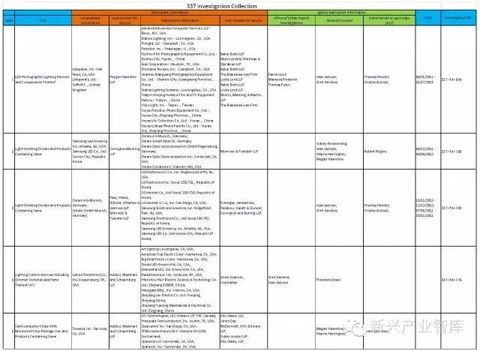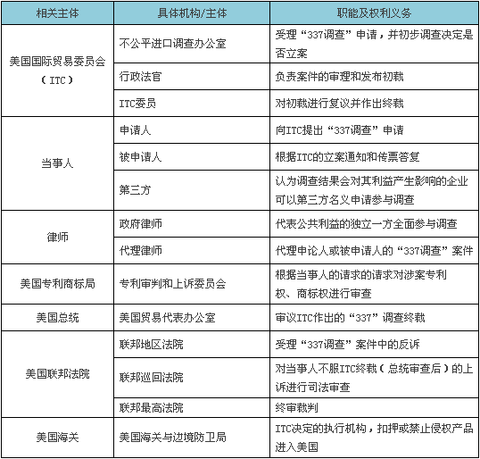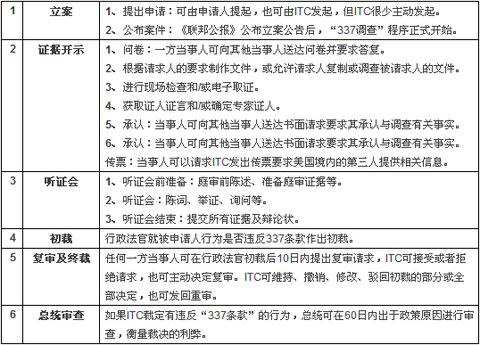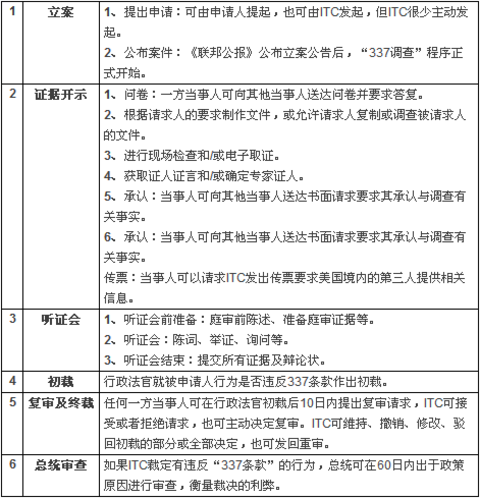What kind of ghost is the US “337 investigation†that has caused Chinese LED companies to suffer?

HC LED screen network reported
According to reports, on August 2, Cree received a preliminary ruling from the US International Trade Commission on the investigation of 337-TA-947 (some LED products and their components). Among them, the judgement of the ITC judges showed that Fett and Dongbei have been found guilty of violation of Section 337 of the Tariff Act.
In fact, back in 1997, LED patent litigation in the United States has been rising, and in February 2008, it first spread to Chinese companies. According to the data, since 2008, Chinese LED companies have repeatedly suffered from the US 337 investigation.
On the whole, most of the companies that have been sued have been developed areas of the LED industry such as the Pearl River Delta, and most of them are small and medium-sized enterprises. However, Chinese LED companies generally choose to adopt an attitude of avoidance and indifference when dealing with such incidents related to the entire industry. It is rare to actively respond to complaints. The study concluded that the US investigation into China 337 is characterized by simplicity, discriminatory, severe, extensive and continuous.
In practice, the 337 investigation also showed the trend of increasing the number of investigations, patent infringement as the main cause, and the high-tech industry involved. Due to China's relatively weak industrial base and intellectual property rights, Chinese companies often face intellectual property barriers when exporting to foreign countries. In particular, Section 337 of the US Tariff Act investigates and remedies for Chinese LED companies, leaving China's LED exporters with few Eat hard.

337 survey information related to LED industry in recent years (click to enlarge)
It is understood that in the 337 investigation in the United States, the patent infringement case can be settled by the claimant and the respondent by signing a settlement agreement. The advantage of the settlement is that it will not be banned by the ITC and can still maintain a certain market, but The intellectual property royalties must be paid to the patentee. If it is found to be infringed by a settlement, ITC will be able to issue a Universal Exclusion Order, a Limited Exclusion Order and a Stop or Prohibition Order. The general exclusion order prohibits all types of imported products from entering the US market. The limited exclusion order only prohibits the infringing products of the investigated companies from entering the US market. Stop or prohibit the infringing companies from requiring the infringing enterprise to stop the infringement, otherwise it will be punished with 100,000 US dollars. The fine of the day.
Whether it is a settlement or an exclusion order or an injunction, it will have an export trade restraining effect on the Chinese enterprises involved in it and its upstream and downstream industries. Even if the settlement is settled, it will cost a high patent fee, the products involved and The products of the downstream industries will be affected by the export of the United States; and with the exclusion order or prohibition order, the products involved and related products will be permanently excluded from the US market, which is significant for the LED lighting industry chain as a whole. Strike.
It is true that China's LED industry has developed on the shoulders of giants, which has also led to a weak position in the LED patent map. In the future, China's LED industry will grow and develop, and inevitably encounter various patent disputes. . However, looking around the status quo of the "patent war" in the LED industry, it can be found that foreign LED companies pay more attention to patent applications, while many domestic enterprises still have no awareness of protecting intellectual property rights. Some people therefore point out that this is also the current "patent war" in the LED industry. "Most of them stay in the international arena. The patent truss between domestic LED companies is not an important reason for the court."
The 337 investigation is a sharp weapon for the United States to safeguard the interests of its own intellectual property. If the Chinese LED enterprise does not meet it, once it is met, whether it is to choose passive evasion or actively respond, it can only be said that it is always a flee. not open. Since we can't escape, we need to plan ahead, "know ourselves and know each other", we must not know a little about it, and we must not know it.
Editor in charge: Tang Ting
Below we will start with a detailed explanation from the basic concept.
According to Section 337 of the US Tariff Act of 1930 (now compiled in Title 19 of the United States Code), if there is any infringement of knowledge or other unfair competition in any import trade, the US International Trade Commission (USITC) can conduct administrative investigations. If ITC determines that an imported product infringes on US domestic intellectual property rights, or does not infringe intellectual property rights, its effects undermine or substantially damage an industry in the United States, or hinder the establishment of the industry, or impose restrictions or monopoly on US business or trade. , ITC has the right to take sanctions. This is the so-called "337 investigation."
The 337 survey has four major characteristics. First, it is easy to file. The applicant who initiated the “337 investigation†only needs to prove that there is an industry related to the intellectual property claimed by the applicant in the United States, and there is no need to prove damage; second, its Punishment is severe. Once it is found to be infringing, not only the relevant products of the respondent, but also other similar products may be banned from entering the United States. Third, its investigation period is short. In most cases, ITC's investigation period is 12-16. In the month, complex cases may be extended to 18 months, while the federal district court’s patent case review period is two years or longer; in the end, it is subject to property jurisdiction and applies to property jurisdiction for all products imported into the United States. As long as it can prove that there is an imported product involved, the applicant can request ITC to conduct an investigation at the same time on the accused enterprises around the world. It is only necessary to consider the jurisdiction of the person when the prohibition order is involved.
337 participants of the survey

337 basic procedures for investigation

The basic procedures of the 337 investigation mainly include filing, evidence discovery, hearings, preliminary judgement, review and final ruling of administrative judges, and presidential review. For example, in the 337 investigation initiated by Career, what was received earlier this month was the preliminary notice of the US International Trade Commission on the investigation of 337-TA-947 (some LED products and their components), because of the infringement of the US patent number. 8596819 (LED lighting product efficiency), US patent number 8628214 (LED lighting product efficiency), US patent number 7976187 (all-round LED lighting products), US patent number 8766298 (LED component structure), in the preliminary stage, ITC judge ruled The verdict shows support for Career’s complaints about the infringement of patents and the publication of false advertisements by Fett Electric and its Asian supplier, Dongbei Optoelectronics Technology Co., Ltd. (In addition, Fett and Dongbei failed to meet the Energy Star Standard / Or the ENERGY STAR label is attached to some of the required products, and the act of publishing false and misleading advertisements is ruled illegal.) According to the current situation, it is expected that the US International Trade Commission will make a final ruling on the investigation on November 29, 2016.
Editor in charge: Tang Ting
Show remaining content on this pageSince the preliminary ruling is only a preliminary opinion, if the parties have objections, the ITC can review the preliminary ruling and the committee itself can take the initiative to review it. The ITC's review decision is final and will take effect as soon as it is announced, and its corresponding remedies will also take effect. In general, it is difficult to make changes in the final ruling. Although the US president has the power to veto the final result, it rarely happens in practice. For the final result, the defendant can appeal to the US Court of Appeal, but it needs to be filed within 60 days. If the Court of Appeal also believes that the award is valid, the alleged product will completely lose the opportunity to sell in the US market.
It can be seen that the entire process of the 337 investigation is very short, usually no more than 18 months from filing to closing, and the cost during this period is usually as high as 3-6 million US dollars, or even higher, and it takes a lot of manpower in a short time. , material and financial resources, which is a major burden for Chinese enterprises, especially small and medium-sized enterprises.
According to the “337†investigation of the general exclusion order, a losing case, together with other companies producing the product in the country, also has to withdraw from the US market. Based on this, US companies sometimes choose small and medium-sized enterprises in China's export-capable industries as the target of the 337 investigation. Once a small and medium-sized enterprise loses the lawsuit, they can use the universal exclusion order to limit the products of all enterprises in the entire industry in the United States. Export. Therefore, the investigation of 337 is very harmful. If it is not refusal, it will lose the relevant market and endanger the development of the whole industry. It is like a kind of weapon with a large area of ​​damage, and its harm is not inferior to anti-dumping.

Editor in charge: Tang Ting
Show remaining content on this page337 investigation result of punishment
If ITC determines that an imported product infringes intellectual property rights in the US market, the possible penalties are as follows:
1. Universal exclusion order
This is the most influential of all the penalties, not only for the respondent's products, but also prohibits all similar infringing products from entering the US market without distinguishing the origin or producer, as well as current and future unseen manufacturers and Importer.
2. Limited exclusion order
It is forbidden for the respondent's infringing products to enter the United States. It can be applied to all types of products that the respondent produces and will infringe now and in the future. The effectiveness can be extended to upstream parts products containing infringing articles, as well as downstream or subordinate products.
3. Prohibition order
The prohibition order is to prohibit continued sales, inventory, publicity, advertising and other infringing products that have been imported into the United States. The difference from the exclusion order is that the exclusion order is mainly executed by the customs, prohibiting the entry of infringing products, and not for importing products from the United States; and the prohibition order is implemented by ITC itself, for products that have been imported into the United States. The prohibition order may be applied separately or in conjunction with the exclusion order.
4. Consent order
In the “337 Investigationâ€, in addition to the settlement method, the parties may also agree to terminate the investigation. The consent order is generally submitted jointly by the applicant and the respondent, or it can be submitted separately by the respondent. The consent order is similar to the settlement agreement, but retains the jurisdiction of ITC.
5. Seizure and confiscation orders
If ITC has issued an exclusion order for a product and the company is trying to export it to the US market again, ITC can issue a seizure and confiscation order. US Customs can seize and confiscate all infringing products that attempt to export to the US market.
6, a fine
After issuing the exclusion order and the prohibition order, the party concerned will face a fine of 100,000 USD/day or a civil penalty equivalent to twice the domestic value of the US domestic product that is illegally imported into the US product if it violates the ITC order. Take the high.
7. Temporary relief measures
Applicants may request ITC to take interim relief measures, including temporary injunctions and exclusion orders, at the same time as submitting an investigation request or prior to ITC's formal investigation. Reasons for ITC's agreement to take interim relief measures include: preliminary determination of violations of Section 337, and if no interim relief measures are taken, US domestic industry may be subject to immediate and substantial damage, or the establishment of US domestic industries may be subject to Threat.
If ITC accepts the application, a temporary injunction will be issued within 90 days of the start of the investigation (within 150 days of the complex case). If ITC believes that the basis of the application is insufficient, or if the temporary injunction causes significant damage to the respondent, the applicant may be required to provide a deposit. During the implementation of interim relief measures, if the importer continues to import the products involved, a deposit must be paid, the amount determined by the ITC, and sufficient to protect the interests of the applicant. If the final ruling is established, the deposit will be owned by the applicant.
337 investigation response
For the 337 investigation, companies can carry out targeted work at different stages before, during, and after the investigation.
Before the investigation
In the production and operation and foreign trade activities, the US export enterprises can take preventive measures to avoid becoming the respondent of the 337 investigation:
1. When producing products for export to the United States, first analyze and evaluate whether the products exported to the United States fall within the scope of protection of US-issued patents, integrated circuit layout designs, etc., and whether the designs and trademarks used and US-authorized designs Similar to a trademark. If it is found that there is any possibility of infringement, the product should be designed to avoid it in time.
2. For the core patent technology that must be used without circumvention, it should actively prepare for negotiations and explore the feasibility of adopting payment license fees, purchasing patents or joint ventures, cooperation, etc., and try to avoid losing the US market due to “337 investigationâ€.
3. When accepting importers, underwriters and distributors to entrust processing, manufacturing and sales of products for export to the United States, the intellectual property exemption clause shall be clearly stipulated by agreement.
4. Proactively carry out reasonable intellectual property rights layout in the United States before production or export. Having a certain number of US patents is also a confrontation and deterrent to applicants. At the same time design possible alternatives to reduce the possibility of infringement.
5. Entrusting a lawyer to issue a legal opinion that the export product does not constitute an intellectual property infringement, avoiding the intentional infringement in the “337 Investigation†and penalizing the compensation of 3 times.
6. Enterprises should establish a global IP strategy as soon as possible to improve their intellectual property risk awareness and overall defense capabilities.
During the investigation
If the company becomes the respondent of the 337 investigation, the following measures can be taken to deal with it:
1. Balance whether to respond
When faced with the 337 investigation, the applicant should first weigh the pros and cons and choose whether to respond. Responding or not is mainly related to cost benefit analysis and corporate development strategy. The responding fees of the 337 investigations usually vary from tens of thousands to millions of dollars depending on the situation. It is worthwhile for the enterprise to consider whether it is worthwhile to respond from the perspective of cost-benefit.
For example, if the cost of responding is greater than the benefit that can be obtained from the market, or if the US has a small market share for the company and has not developed into an important market in the future, then it should be carefully weighed against whether it should respond. In addition, enterprises should also consider the negative consequences of non-action: for an respondent who is absent, the administrative judge can presume that the facts in the application are established and that the applicant violates Section 337, and then issues the exclusion order. The respondent's products entered the US market. If the company chooses not to sue, the consequences are equal to giving up the US market. If the US market means life and death for the enterprise, even if the size of the enterprise is small and the US market share is small, it should respond to it. In short, companies should carefully weigh and make decisions based on specific circumstances.
2. Whether to act as a third party
If the third party is willing to participate in the investigation process according to their own interests, they may submit a written agreement to the ITC wishing to participate in the investigation procedure, and at the same time submit a certificate that they have served the motion to each party, and the investigation authority will conduct the review. If the interested party does not participate in the investigation, it will lose the opportunity to use the investigation process to collect information and express opinions, and may ultimately be affected by the decisions made by ITC and related relief measures.
3. Response team
After the company decides to respond to the 337 investigation, it should immediately start to form a response team, including the internal team and the lawyer team. The 337 survey has a fast pace and a large workload, and requires a highly qualified team to respond quickly.
(1) Internal team
Leader: A person who is responsible for making decisions on most of the case is responsible for the overall arrangement of the case.
Technicians: Product technical issues are often the core issue of whether or not to infringe. It is essential that technically savvy personnel participate in the response team.
Market personnel: “337 investigations†are often market disputes, requiring market personnel to prepare a large amount of data and information on market sales.
Executives: Businesses often need to provide a large amount of evidence in a short period of time, so staff responsible for organizing documents and materials need to join the team.
Executives: Businesses often need to provide a large amount of evidence in a short period of time, so staff responsible for organizing documents and materials need to join the team.
High-quality shops recommended: Shenzhen Caishi Optoelectronics Technology Co., Ltd.
Get new information immediately, understand the market dynamics, welcome to pay attention to HC LED screen information service.
HC LED screen information service
Editor in charge: Tang Ting
Girls Princess Dress,Girls' Sweet School Dress,Children'S Seaside Holiday Princess Dress,Cotton Children'S Bow Dress
Chaowei Four Seasons Garment Co., Ltd. , https://www.smockingdress.com